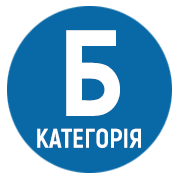METHODOLOGICAL FUNDAMENTALS OF USING PHET-SIMULATIONS IN THE PROCESS OF LEARNING PHYSICS
DOI:
https://doi.org/10.25128/2415-3605.22.1.2Keywords:
educational process, computer models, PhET-SimulationsAbstract
The article considers didactic and methodological possibilities of using PhET Interactive Simulations in the educational process. The application of electronic resources in the organization of educational and cognitive activities of students in the study of physics is proposed. Features and conditions of using computer models during the organization of the educational process are analyzed. The aim of the article is to consider the methodological possibilities and analyze the effectiveness of the use of PhET-Simulations in the study of physics. The following methods were used in the research process: theoretical – analysis, comparison, systematization and generalization of educational and methodological, popular science and applied sources on the research problem. It is argued that computer models are an effective tool for testing homework, explaining new and consolidating the previously learned material as homework or for independent work, and they play a special role during a demonstration experiment or laboratory workshop. Models become especially relevant when a real physical experiment is impossible. Examples of qualitative and quantitative tasks of different levels of complexity from the section “Mechanics” are given; performing tasks of this type contributes to better mastering of the theoretical material. It is substantiated that the use of computer modeling at lessons of natural and mathematical disciplines stimulates educational and scientific-cognitive, research activities of students, activates creative activity and has a positive effect on success, expands understanding of physical phenomena and processes occurring in the environment; enable students to understand natural phenomena at the highest level. The use of information and communication technologies in the educational process is based on changes in student learning activities and radical modernization of teacher activities, provides the formation of both key and subject competences of students.
References
Бар’яхтар В. Г., Довгий С. О., Божинова Ф. Я., Кірюхіна О. О. Фізика (рівень стандарту, за навчальною програмою авторського колективу під керівництвом Локтєва В. М.): підруч. для 10 кл. закл. загал. серед. освіти. Харків: Ранок, 2018. 272 c.
Биков В. Ю. Інформатизація загальноосвітньої та професійно-технічної школи України: концептуальні засади та пріоритетні напрямки. Професійна освіта: педагогіка та психологія. Україно-польський журнал. Вид. IV. Вид-во Вищої педагогічної школи у Ченстохові. Ченстохова, 2003. С. 501–515.
Візнюк В. Цифрова компетентність майбутніх педагогів як невід’ємна складова професійної підготовки. Наукові записки Тернопільського національного педагогічного університету імені Володимира Гнатюка. Серія: педагогіка. 2019 (1). С. 130–136. URL: https://doi.org/10.25128/2415-3605.19.1.17
Жук М. Д., Мартинюк С. В., Федчишин О. М. Інформаційно-комунікаційні технології в процесі вивчення фізики. Тези доповідей I Міжнародної науково-практичної конференції «Modern science: problems and innovations» (Стокгольм, Швеція, 5–7 квітня 2020 р.). 2020. С. 390–398.
Інтерактивні симуляції для природничих наук і математики. URL: https://phet.colorado.edu/uk/.
Литвинова С. Модель використання системи комп’ютерного моделювання для формування компетентностей учнів з природничо-математичних предметів. Фізико-математична освіта. 2019. Вип. 1 (19). С. 108–115. URL: https://doi.org/ 10.31110/2413-1571-2019-019-1-017
Мохун С. В., Федчишин О. М. Використання віртуальних фізичних моделей в умовах дистанційного навчання. Сучасні інформаційні технології та інноваційні методики навчання: досвід, тенденції, перспективи: Матеріали VІ міжнар. наук.-практ. інтернет-конф. (м. Тернопіль, 12–13 листопада 2020 р.). Тернопіль, 2020. C. 139–142.
Слободяник О. В. Використання комп’ютерних моделей під час індивідуальної роботи учнів з фізики. Фізико-математична освіта. 2019. Вип. 4 (22). С. 116–123.
Федчишин О. М. Діяльність вчителя на уроках фізики з використанням інформаційних технологій та засобів навчання. Сучасні інформаційні технології та інноваційні методики навчання: досвід, тенденції, перспективи: тези доп. міжн. наук.-практ. інтернет-конф. (м. Тернопіль, 9–10 листопада, 2017). Тернопіль, 2017. C. 244–248.
Фізика. Навчальні програми для загальноосвітніх навчальних закладів. Фізика. 10–11 класи. URL: https://mon.gov.ua/storage/app/media/zagalna%20serednya/programy-10-11-klas/2018-2019/fizika-10-11-avtorskij-kolektiv-pid-kerivnicztvom-lokteva-vm.pdf
Chang K. E., Chen Y. L., Lin H Y and Sung Y. T., Effects of learning support in simulation based physics learning. Computers & Education. 2008. 51 (4). Р. 1486–1498.
JavaLab. URL: https://javalab.org/en
Saastamoinen K. and Rissanen A. Understanding physical phenomena through simulation exercises. Journal of Physics: Conf. Series 1286. 2019. Р. 1–9.
Physics at school-HTML5. URL: https://www.vascak.cz/physicsanimations.php?l=ua






